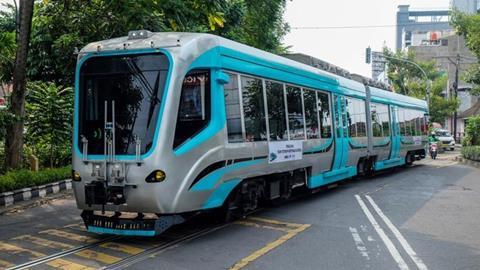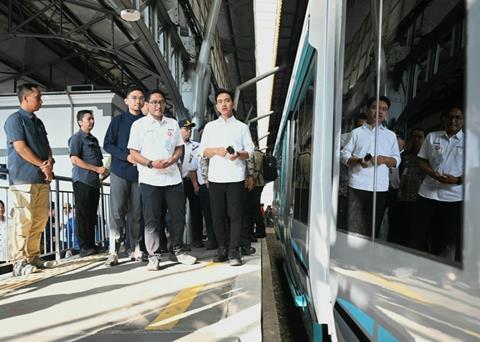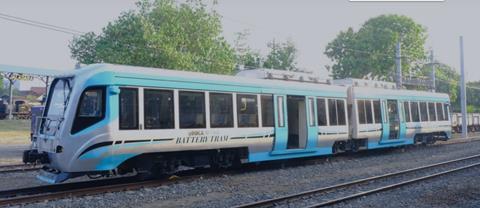
INDONESIA: Test running of a domestically developed, battery-powered, autonomous light rail vehicle began in Solo on November 6.
The LRV was designed and built by PT Inka and its AI-enhanced control equipment was developed by the Bandung Institute of Technology in a project started in 2021 and co-financed by the Ministry of Finance.
Test running is scheduled to last until November 22 on a section of track along Slamet Riyadi Way, between Purwosari station on the main line to Yogyakarta and Solokota. This street running section forms part of an unelectrified 1 067 mm branch line to Wonogiri. This section was chosen because it would put the LRV in real road traffic with frequent intersections.
Indonesia’s Vice President Gibran Rakabuming attended a previous trial run at Purwosari station on November 2 and said that ‘I hope that this environmentally friendly technology can be replicated in other cities in Indonesia, in line with President Prabowo’s government’s priority of supporting carbon emission reduction and creating a cleaner and greener environment’.
Features
The vehicle was designed to be capable of running both with driver and in autonomous operation in road traffic with frequent junctions.
The light rail vehicle is equipped with sensors for object detection in various weather conditions. These include cameras, radars, LiDAR and GNSS satellite location functionality. The information captured by these sensors is processed by an AI tool, supporting the vehicle to make decisions autonomously.

The vehicle is also equipped with signal recognition, an adaptive cruise control and an automated emergency braking system. It is capable of observing speed limits and recognising pedestrians and vehicles. The vehicle also has a driver attention warning system.
The vehicle is driven by an electric motor supported by a 200 kWh battery, which has a range of up to 90 km on a single charge.
In the initial phase, the LRV completed test runs in PT Inka’s factory. These tests included collision and overspeed warning and detection of ‘tired or sleepy driver conditions’.

In the second phase, the vehicle was tested at PT Inka’s test track, which has a series of road crossings. These trials focused on signal recognition, automatic acceleration and deceleration, and emergency braking.
‘This battery-powered autonomous light rail vehicle not only supports carbon emission reduction, but also reduces the risk of human error from the driver’s side and increases safety in light rail operation’, said Febry Pandu Wijaya, Research & Development General Manager at PT Inka.

